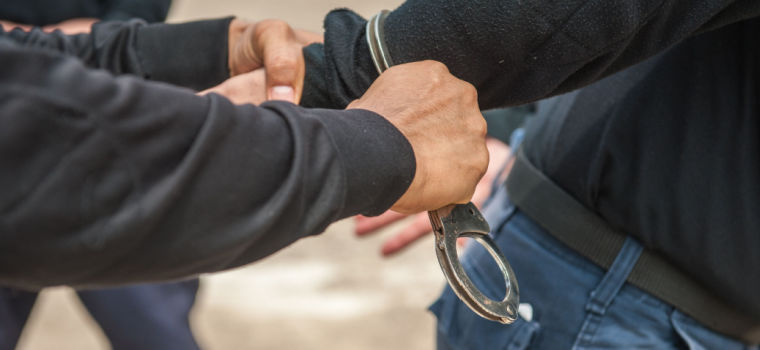
In the Philippine legal system, arrest is a crucial process carried out to bring a person into custody and hold them accountable for the commission of an offense. Understanding the rules and procedures governing arrests is essential for upholding individual rights and ensuring proper law enforcement. In this blog, we will delve into Rule 113 of the Revised Rules of Criminal Procedure, which outlines the laws and principles surrounding arrests in the Philippines.
What is the definition of arrest?
Arrest is the taking of a person into custody in order that he may be bound to answer for the commission of an offense. It involves placing a person under restraint, depriving them of their own will and liberty, and making them obedient to the will of the law.[1]
How is an arrest made?
An arrest can be made in two ways:
- By actual restraint of the person to be arrested, where the person making the arrest performs an act with the intent to effect the arrest and the person arrested understands that he is within the power and control of the arresting officer; and
- By the submission of the person to be arrested to the custody of the person making the arrest, where the person voluntarily surrenders or allows themselves to be placed within the power and control of the arresting officer[2].
Can unnecessary force be used during an arrest?
Generally, No. Unnecessary force or violence should not be used during an arrest.[3] The person making the arrest is only allowed to use necessary force to overcome resistance, prevent escape, secure and detain the person to be arrested, recapture the subject if he escapes, and protect themselves from bodily harm[4]. The level of force used should be based on the circumstances and should not exceed what is necessary for detention.
What is the difference between custody of law and jurisdiction over the person?
Custody of the law signifies the restraint on a person, depriving them of their will and liberty, and binding them to obey the law. It is essential for the court to have custody of the law before acting upon an application for bail. However, custody of the law is not necessary for the adjudication of other reliefs sought by the defendant. Jurisdiction over the person is acquired upon arrest or voluntary appearance of the accused. The distinction between custody of the law and jurisdiction over the person is crucial to understand in various legal situations[5].
What is a warrant of arrest, and who issues it?
A warrant of arrest is a legal process issued by a judge or magistrate, directing a peace officer or someone else named therein to arrest a person accused of an offense. It is issued after a judicial determination of probable cause, usually within ten days after the filing of a complaint or information. The judge evaluates the resolution of the prosecutor and its supporting evidence before deciding whether to issue the warrant.[6]
Under what circumstances can an arrest be made without a warrant?
There are several instances where an arrest can be made without a warrant:
- When the person to be arrested has committed, is actually committing, or is attempting to commit an offense in the presence of the arresting officer;
- When an offense has just been committed, and the arresting officer has probable cause to believe, based on personal knowledge of facts or circumstances, that the person to be arrested has committed it; and
- When the person to be arrested is a prisoner who has escaped from a penal establishment or place where he is serving final judgment or is temporarily confined while his case is pending, or has escaped while being transferred from one confinement to another.[7]
Can the illegality of arrest be the basis for acquittal?
No. The legality of an arrest affects only the jurisdiction of the court over the person of the accused. Consequently, if objections based on this ground are waived, the fact that the arrest was illegal is not a sufficient cause for setting aside an otherwise valid judgment rendered after a trial, free from error. The technicality cannot render subsequent proceedings void and deprive the State of its right to convict the guilty when all the facts on record point to the culpability of the accused[8].
What are the Miranda Rights?
The Miranda Rights refer to the rights of a person under custodial investigation, as provided in Article III, Section 12(1) of the 1987 Constitution on the Bill of Rights. It includes the right to remain silent and the right to have a competent and independent counsel, preferably of their own choice. These rights cannot be waived except in writing and in the presence of counsel.
When is a person under custodial investigation?
It is when the investigation ceases to be a general inquiry into an unsolved crime and the interrogation is then aimed to a particular suspect who has been taken into custody and to whom the police would then direct interrogatory questions that tend to elicit incriminating statements. It shall include invitation to a person.[9]
The laws surrounding arrests in the Philippines aim to protect individual rights while enabling law enforcement to bring offenders to justice. Understanding the rules and procedures governing arrests is vital for upholding justice and maintaining a just and lawful society.
[1] Section 1, Rule 113, Rules of Court.
[2] Id., Section 2.
[3] Id.
[4] People v. Oanis, G.R. No. L-47722, July 27, 1943.
[5] Miranda v. Tuliao, G.R. No. 158763, March 31, 2006.
[6] Section 5(a), Rule 112, Rules of Court.
[7] Section 5, Rule 113, Rules of Court.
[8] People v. Timon, 346 Phil. 572 (1997)
[9] People v. Marra, 236 SCRA 565


